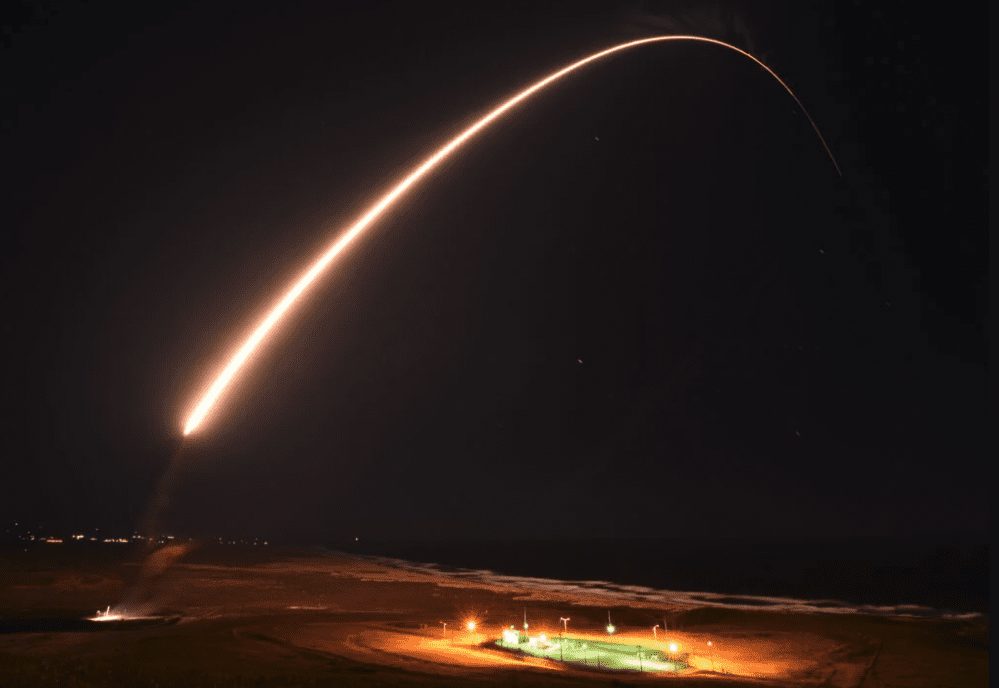A military test rocket exploded seconds after launching at Vandenberg Space Force Base, California, late Wednesday night.
The Minotaur II+ rocket exploded just 11 seconds after launching at 11 p.m. The Vandenberg Fire Department responded to the fire, but authorities said the fire was mostly smoke and not an immediate danger to the rest of the base.
“There were no injuries in the explosion and the debris was contained to the immediate vicinity of the launch pad,” the base said.
An investigative review board has been created to investigate the cause of the mishap.
It was the first test launch of a critical component of the United States’ future land-based nuclear missiles.
The Minotaur II+ was carrying a Mk21A re-entry vehicle, which is the part in a nuclear missile that would hold a real warhead in an actual launch. The test launch was to demonstrate preliminary design concepts and relevant technologies in operationally realistic environments, according to Air Force Nuclear Weapons Center officials.
Test launches help military officials gather “detailed, reliable” data to help shape the prototype into the final product, according to the service.
The Air Force’s new Mk21A re-entry vehicle is planned for use on the LGM-35A Sentinel intercontinental ballistic missile (ICBM). The Air Force Nuclear Weapons Center developed both.
The new re-entry vehicle works by carrying the warhead to the edge of space before gliding down to its target. The Mk21A is expected to accommodate future warhead designs on new ICBMs over the following decades.
The LGM-35A Sentinel ICBMs will replace the 400 nuclear missiles currently in underground silos across Montana, Wyoming, and North Dakota through the late 2020s.
Vandenberg Space Force Base routinely holds test launches of unarmed missile bodies without a nuclear warhead inside to determine the condition of aging ICBMs and to vet new technology.






